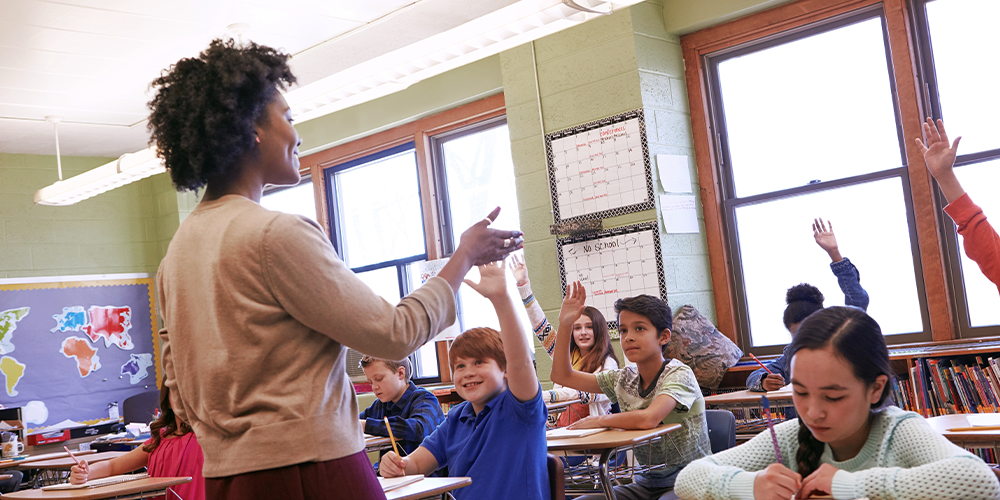Introduction to Social Emotional Learning (SEL) in Classrooms
Social Emotional Learning (SEL) has emerged as a crucial component of education, focusing on the development of essential skills beyond academic knowledge. Sel In Classrooms equips students with competencies such as self-awareness, self-management, social awareness, relationship skills, and responsible decision-making. These skills are foundational for students to thrive academically, socially, and emotionally.
Key Components of Social Emotional Learning
- Self-Awareness: SEL programs help students recognize and understand their emotions, strengths, and areas for growth. Through activities like self-reflection and goal-setting, students develop a deeper understanding of themselves and their impact on others.
- Self-Management: Students learn strategies to regulate their emotions, thoughts, and behaviors effectively. This includes techniques for managing stress, setting achievable goals, and persevering through challenges.
- Social Awareness: SEL fosters empathy and perspective-taking among students. They learn to appreciate and respect diverse perspectives and backgrounds, promoting inclusive and supportive classroom environments.
- Relationship Skills: SEL emphasizes effective communication, collaboration, and conflict resolution. Students practice skills such as active listening, teamwork, and constructive feedback, essential for building positive relationships with peers and adults.
- Responsible Decision-Making: Students learn to make ethical and constructive choices considering social norms, safety concerns, and the well-being of others. SEL encourages critical thinking and problem-solving skills necessary for navigating complex situations.
Benefits of SEL in Classrooms
– Improved Academic Performance: Research indicates that students engaged in SEL demonstrate improved academic achievement, including higher grades and standardized test scores. Enhanced focus, motivation, and classroom engagement contribute to academic success.
– Enhanced Social Skills: SEL cultivates positive social behaviors and reduces negative behaviors such as aggression and bullying. Students develop empathy, respect, and cooperation, creating a supportive and inclusive classroom community.
– Better Emotional Regulation: SEL equips students with coping strategies to manage stress, anxiety, and other emotional challenges. This promotes mental well-being and resilience, essential for navigating academic and personal challenges.
– Preparation for Life Skills: Beyond academic success, SEL prepares students for success in their future careers and personal lives. Skills such as effective communication, teamwork, and decision-making are critical for lifelong success and well-being.
Implementing SEL in Educational Settings
Effective implementation of SEL in classrooms involves:
– Curriculum Integration:Integrating SEL into existing curriculum subjects and daily activities ensures continuity and relevance. Teachers incorporate SEL concepts through lessons, discussions, and cooperative learning activities.
– Teacher Training: Providing professional development opportunities for educators on SEL principles, strategies, and classroom management techniques. Teachers play a pivotal role in modeling SEL skills and creating a supportive learning environment.
– Parent and Community Involvement: Collaborating with parents, caregivers, and community members to reinforce SEL concepts and practices outside of school. Building partnerships enhances support for students’ social-emotional development across different environments.
Challenges and Considerations
-Time and Resources: Allocating sufficient time and resources for SEL implementation within packed school schedules can be challenging. Schools may need to prioritize and integrate SEL strategically to maximize effectiveness.
– Assessment and Evaluation:Developing reliable methods to assess students’ social-emotional competencies and measure the impact of SEL programs on academic and behavioral outcomes. Effective evaluation informs continuous improvement and evidence-based decision-making.
Future Directions and Recommendations
Looking ahead, advancing SEL in classrooms requires:
– Policy Support: Advocating for policies that prioritize SEL as an essential component of education, supported by funding and resources.
– Research and Innovation:Continued research on effective SEL practices, interventions, and their long-term impact on students’ academic and social-emotional development.
– Equity and Inclusion: Ensuring SEL programs are culturally responsive and inclusive, addressing diverse student needs and backgrounds.
Conclusion
In conclusion, integrating Social Emotional Learning In Classroom into classrooms is instrumental in nurturing students’ holistic development and preparing them for success in school and beyond. By fostering self-awareness, empathy, and responsible decision-making, SEL equips students with essential skills to thrive in today’s interconnected world. As educators and policymakers recognize the importance of social-emotional competencies, investing in SEL becomes integral to creating supportive, inclusive, and resilient learning environments where every student can reach their full potential.












